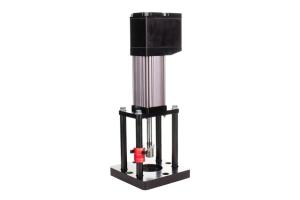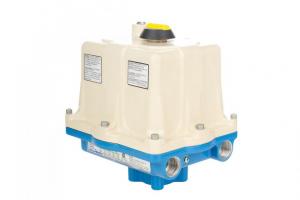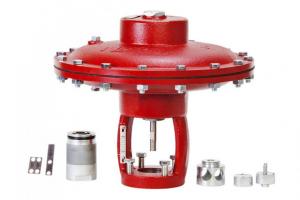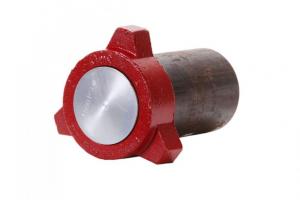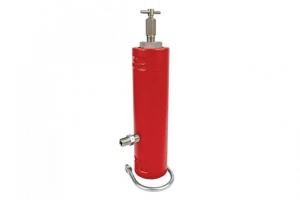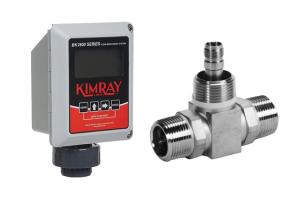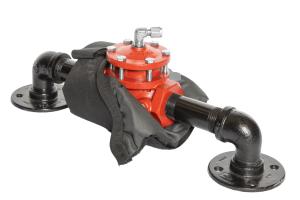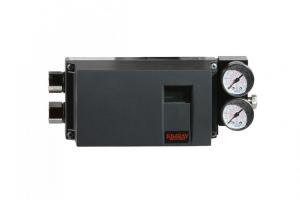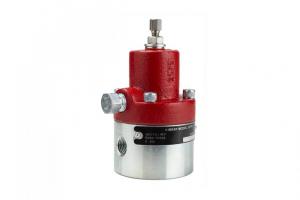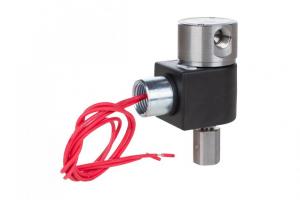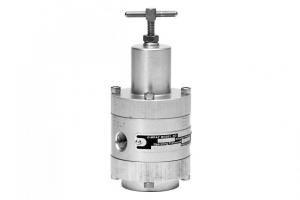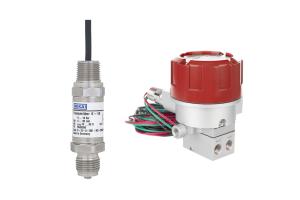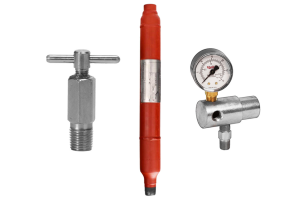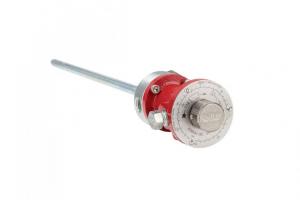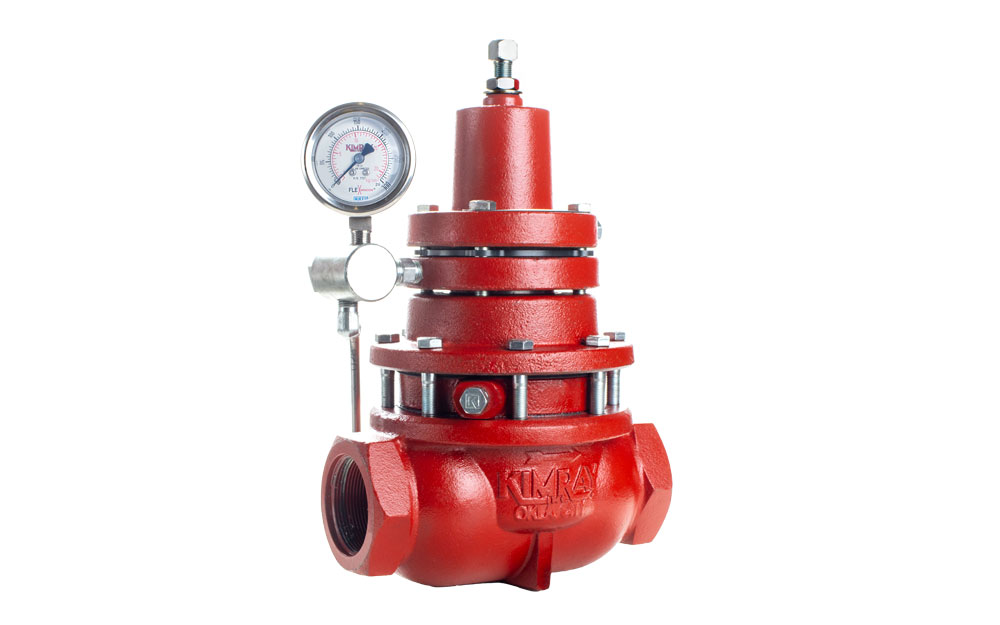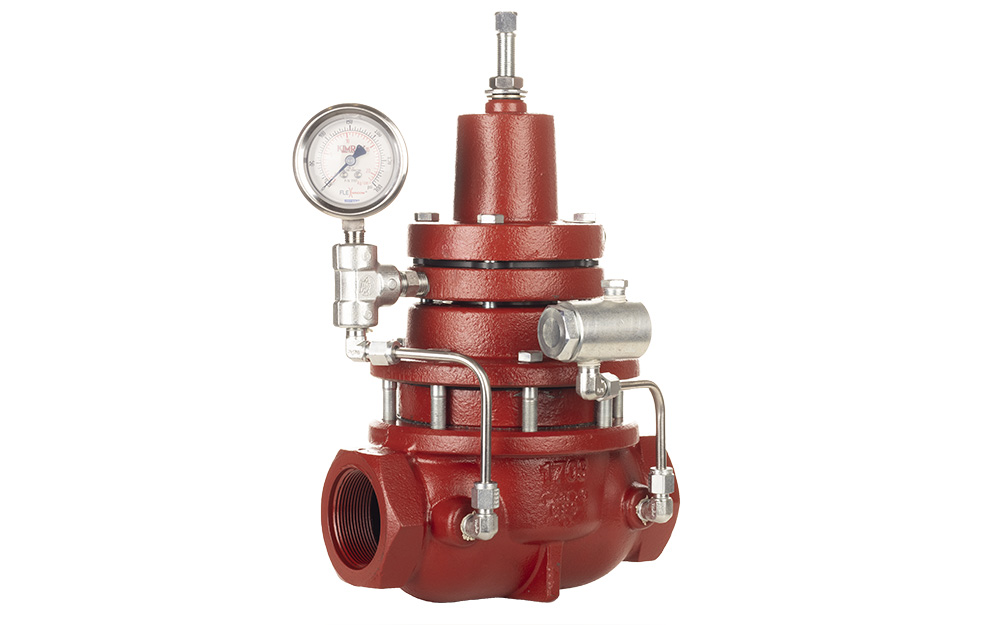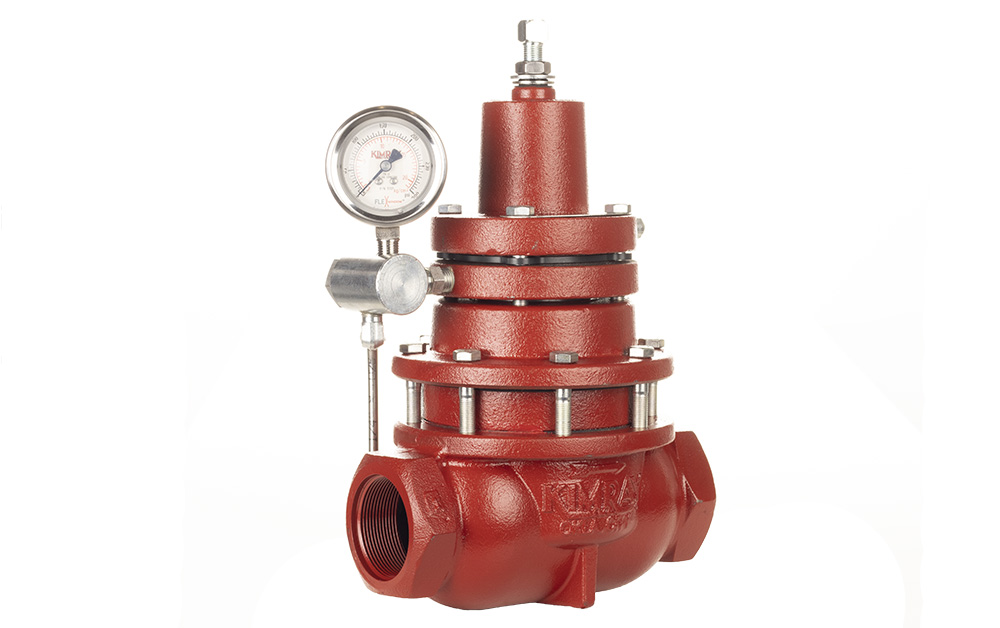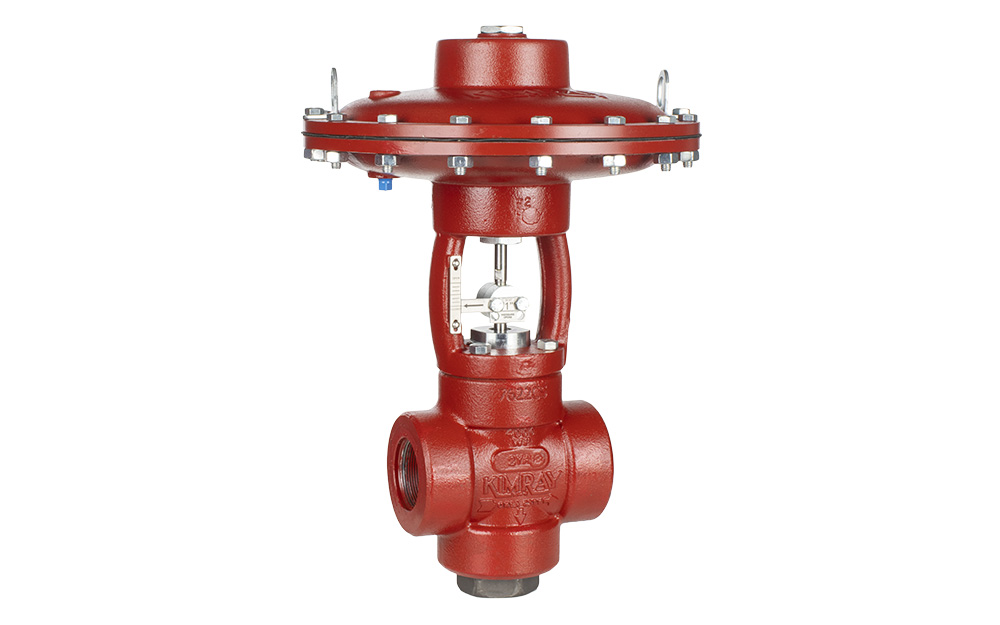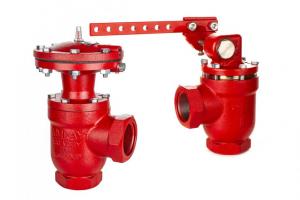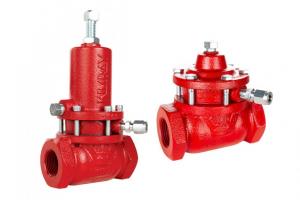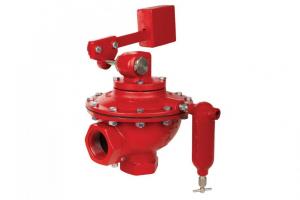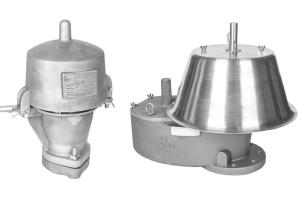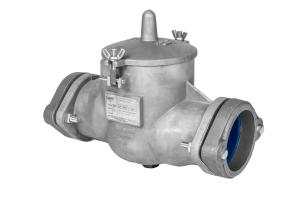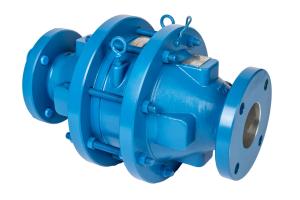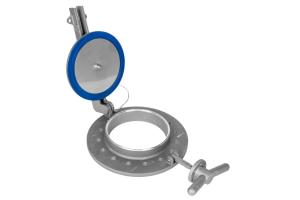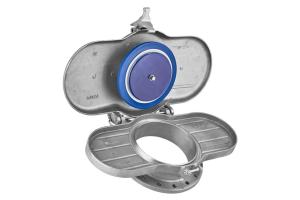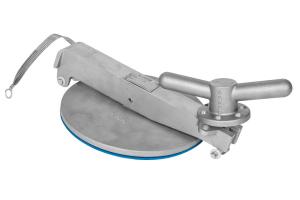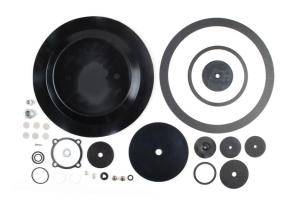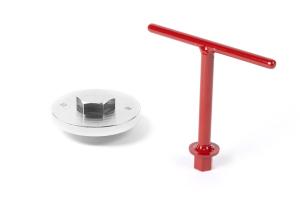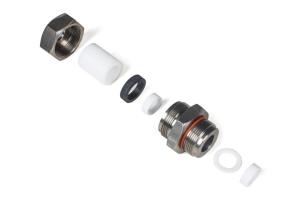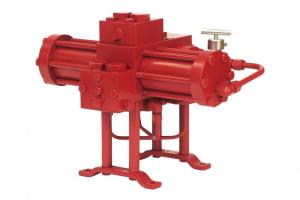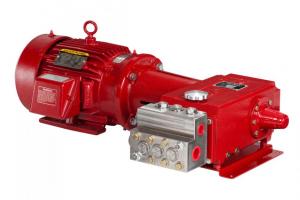There are seven key factors to consider when selecting an electric valve actuator to help you decide which is appropriate for your operation.
- Motion Type & Mount Requirements
- Input Power & Battery Backup
- Actuation Speed
- Thrust Force
- Certifications and Ratings
- User Interface
- Differential Limitations & Cycle Frequency
We'll compare these factors in the 3 electric actuator models we offer:
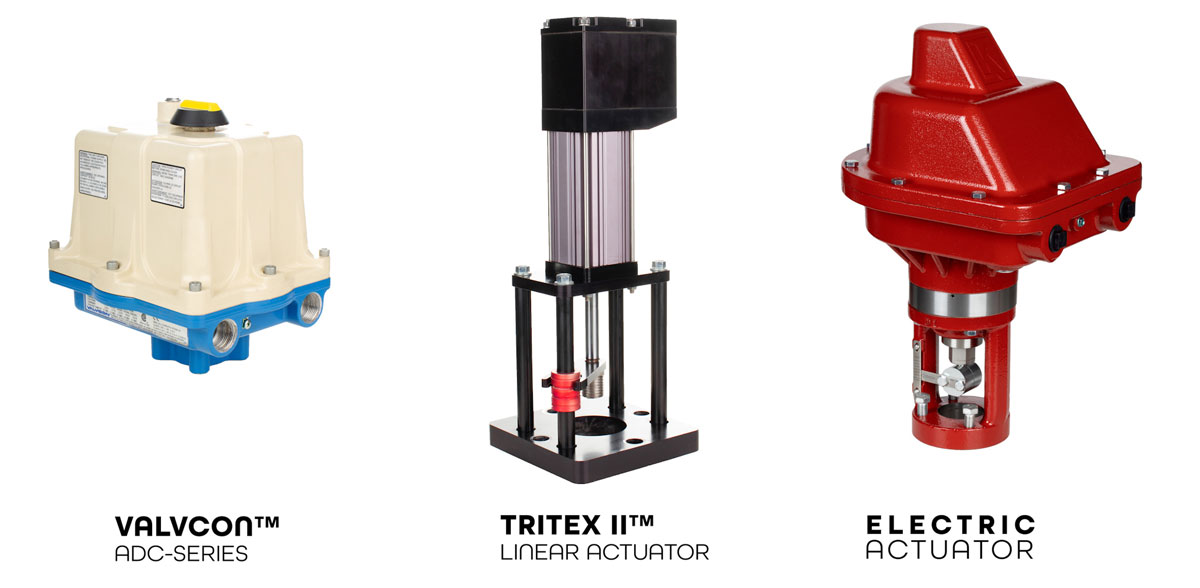
1. Motion Type & Mounting

Electric actuators fall into two categories based on their motion—rotary or linear. Neither category is inherently superior; the difference is in how internal components and mechanisms operate.
Valvcon
The Valvcon is a rotary actuator and requires an adapter to convert the rotary motion to a linear motion like on a high pressure control valve stem. It’s ideal for most applications with 1” - 2” valves.
Tritex II
The Tritex II is a linear actuator and actuates in a straight line up and down. However, it also requires a mounting kit that comes in various sizes depending on your valve body.
It is available for all Kimray high pressure control valves from 1”- 4” and can be used on some 6” and larger valves.
Kimray Electric Actuator
Kimray's Electric Actuator is a linear actuator, meaning you can install it directly on a linear globe valve like a High Pressure Control Valve body and the motion will occur along a straight line.
The Kimray Electric Actuator works on all control valve bodies from 1”-10” and is simplified to four options to choose from solely based on the valve body connection size. There is no adapter or mount needed and it is mounted with four bolts into the valve body.
2. Input Power & Battery Backup

Valvcon
The Valcon has universal voltage and can use 12-48 volts DC or 120-240 volts AC. It also has a lithium-ion battery backup.
Tritex II
The Tritex operates on 12-48 volts DC and does not have battery backup. If there’s a loss of power, it will fail in place. However, it has fail-safe positioning and if a low bus voltage limit is reached or loss of signal is detected, it will move to a desired setpoint position.
Kimray Electric Actuator
The Kimray Electric Actuator operates on 12-24 volts and is equipped with a lithium-ion battery backup, which requires a minimum of 16 volts to charge. If you’re using 12 volts, the battery backup will not be applied.
3. Actuation Speed

Valvcon
The Valvcon features 13-second actuation, fully closed to fully open.
Tritex II
The Tritex is capable of being adjusted for up to 5 inches per second of linear stem travel. This is ideal for applications where actuation speed is crucial, but this kind of speed is never used specifically for oil and gas applications.
Kimray Electric Actuator
The Kimray Electric Actuator has actuation speeds of up to 1/2" per second, providing accurate control of both liquid and gas applications.
4. Thrust

When needing to open or close a valve off the seat, a consideration for which actuator to use is the thrust force. Larger size valves have more volume, resulting in more pressure on the seat and requiring a higher maximum thrust force.
Valvcon
The Valvcon maximum thrust force is 600 lbf (pounds per foot), and with the Kimray R2L Adapter can reach 1200 lbf.
Tritex II
The Tritex II maximum thrust force is 1700 lbf.
Kimray Electric Actuator
The Kimray Electric Actuator has a maximum thrust of 3200 lbf, making it the best option for larger valves and production volumes. The continuous force is 1500 lbf for lower amp ratings.
5. Certifications & Ratings

Valvcon
The Valvcon carries a Class 1, Div 1 explosion-proof rating, meaning that it is designed to work in areas where ignitable concentrations of flammable gases, vapors, or liquids are likely to exist under normal operating conditions.
Tritex II
The Tritex II has a Class 1, Div 2 rating. The Div 2 rating means that it can operate in areas where those gases, vapors, or liquids are not likely to exist under normal operating conditions.
Kimray Electric Actuator
The Kimray Electric Actuator has Class 1, Div 1 rating.
6. User Interface

Valvcon
Regarding user interface, the Valvcon features a user interface board with simple controls. Everything is labeled right on the board, and there is no computer programming involved.
Tritex II
The Tritex II requires a computer to program which adds a level of complexity and specialized training to set up, but also gives the user more custom controls.
Kimray Electric Actuator
One of the great features of the Kimray Electric Actuator is the push-button OLED screen, which allows quick set up and calibration. It can be calibrated on a 2” valve body in approximately 35 seconds.
7. Differential Limitations & Cycle Frequency

Valvcon
The Valvcon’s life span under a large pressure differential and high cycle frequency rate is very low.
Tritex II
The Tritex can stand up under a large pressure differential; however, it pulls 9 amps, meaning solar power could be an issue in certain regions.
Kimray Electric Actuator
The Kimray Electric Actuator has overcome these challenges because it’s built with durable components designed specifically for the modern oilfield, and because it only requires 5 amps.
Two Additional Features to Consider
A couple of additional features to consider are temperature control and blockage control.
- Temperature Control: Both the Valvcon and Kimray Electric Actuator feature an onboard heater for use in the event of extreme cold weather as well as humidity control.
- Blockage Control: In the event of blockage in the bottom works, the Kimray Electric Actuator will increase the pressure and time between actuation to try to clear the blockage with both settings adjustable by the user interface.
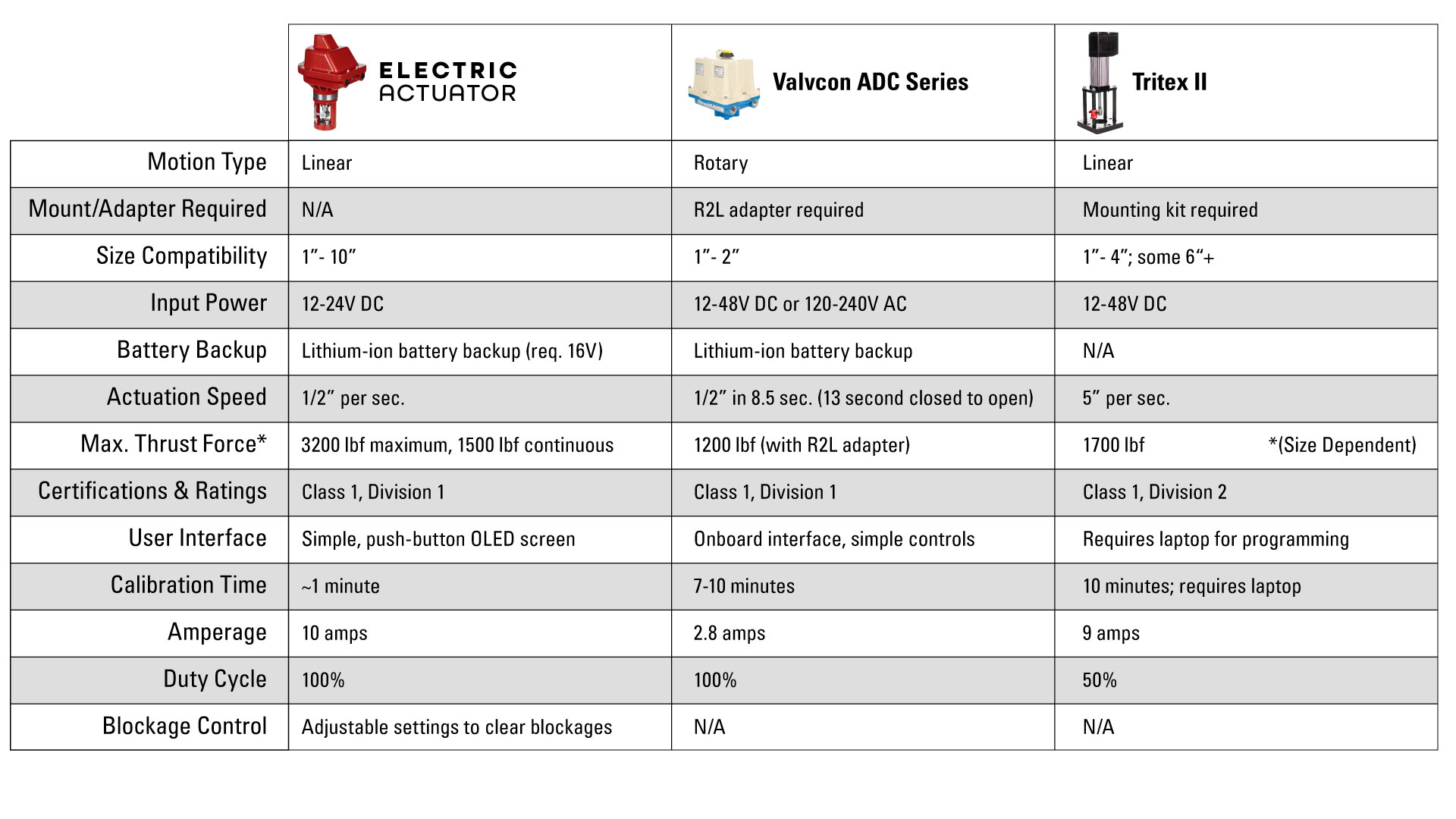
To speak with an expert about choosing the right actuator for your operation or other zero emission solutions, contact your local Kimray store or authorized distributor.

